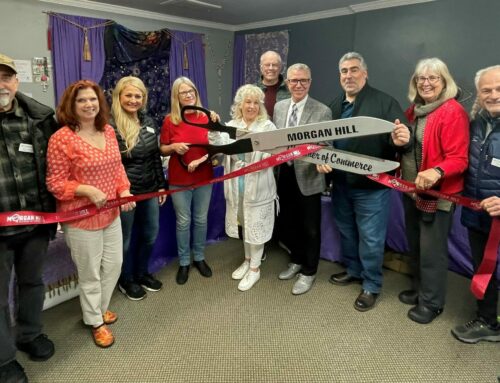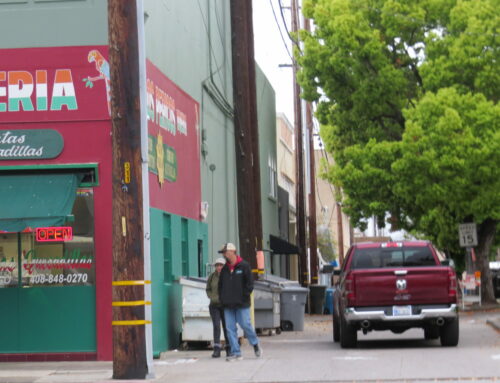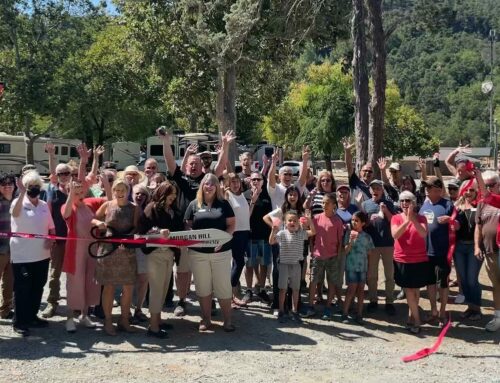This year, more than 86,000 poinsettias grown by Headstart for holiday decoration
Published in the December 6 – 19, 2017 issue of Morgan Hill Life
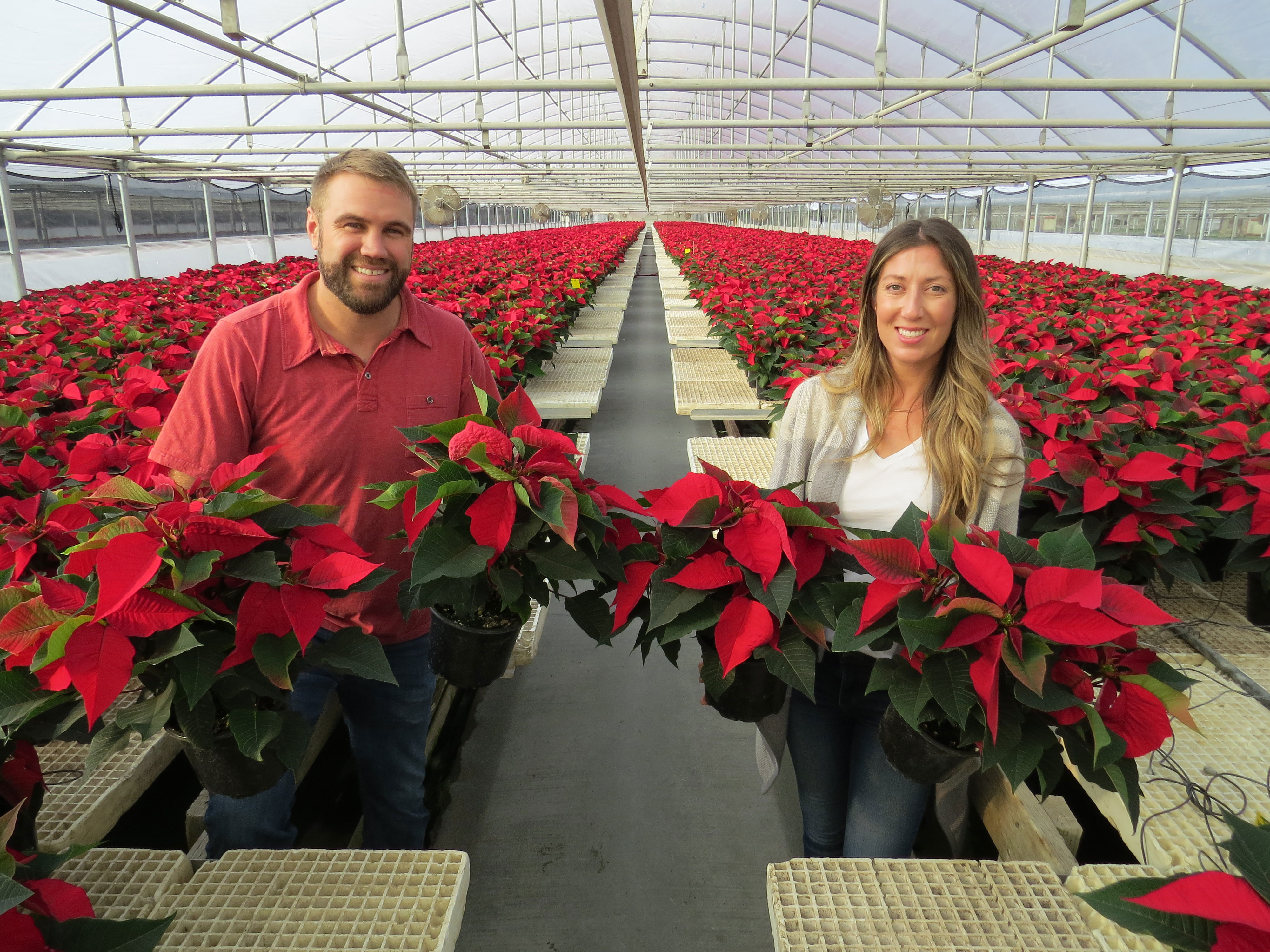
Grant Cornia and Melissa Campilli in one of Headstart Nursery’s Gilroy greenhouses. Photo by Marty Cheek
Schools and nonprofit organizations in the South Valley can thank Joel Roberts Poinsett for helping them raise tens of thousands of dollars every year during the holidays. The man gave his name to a plant accented with bright red flowers that is a favorite floral form of decorating homes and businesses during the holidays.
Every year, Gilroy’s Headstart Nursery grow thousands of poinsettias used for fundraising in the South Valley — and as far away as Arizona. The company was started by brothers Steve and Randy Costa in 1979 to produce vegetable transplants and over the past two decades has grown a reputation for producing high-quality poinsettias as well as ornamental plug products.
The story of the flower’s popularity begins with Poinsett serving as the first U.S. Minister to Mexico in the mid-1820s. He visited an area south of Mexico City near Taxco de Alarcón, and saw a plant with bright foliage the local people called Flor de Nochebuena, which bloomed during Christmas. (The indigenous plant carried the scientific name Euphorbia pulcherrima.) An avid amateur botanist, the government official sent clippings to a gardener friend in America. From there, the flower’s popularity bloomed, becoming a beloved holiday decoration. It was renamed in honor of Poinsett. Last year, more than 33 million poinsettias were grown in the United States.
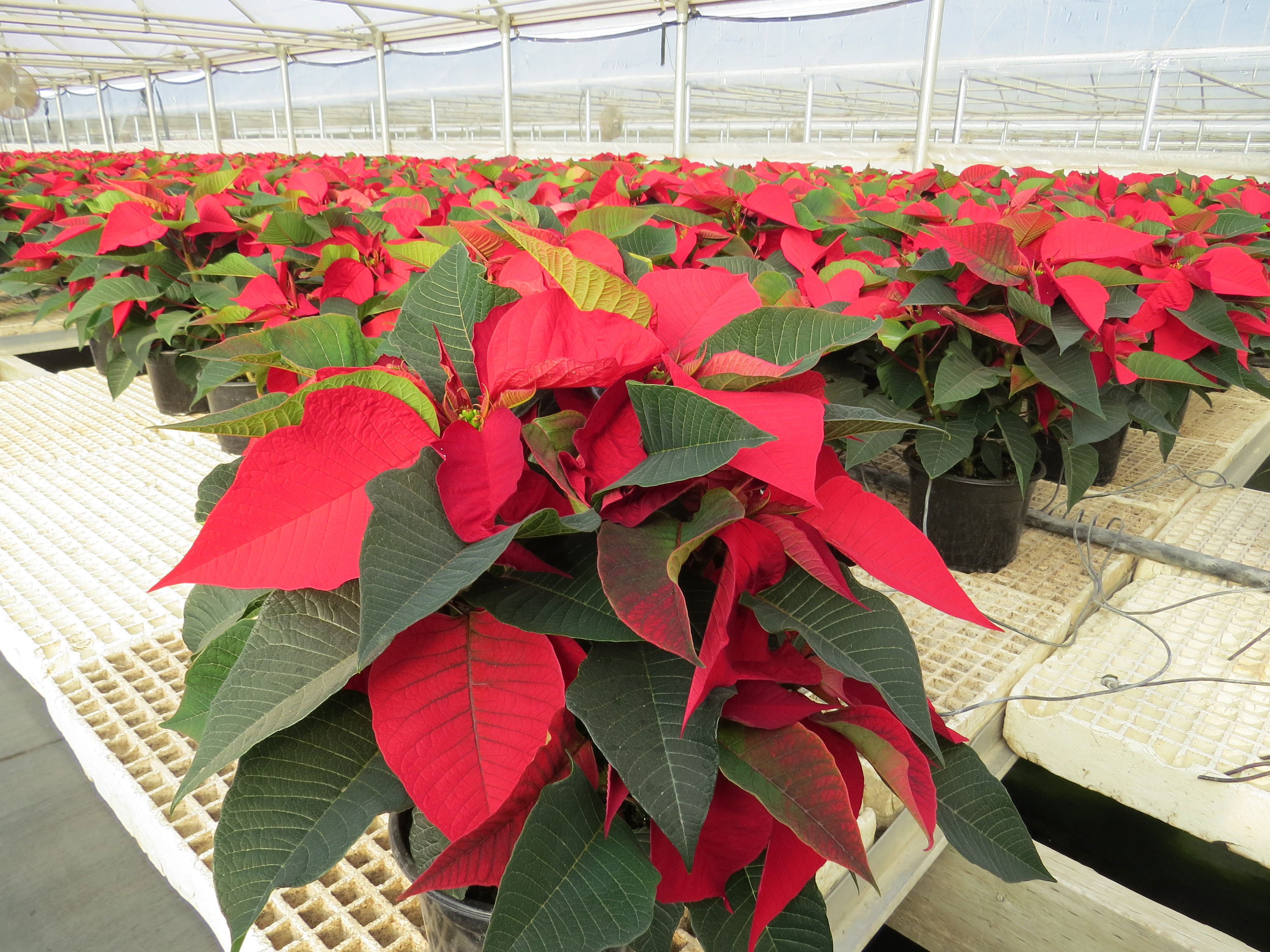
Poinsettias in one of the greenhouses of Headstart Nursery in Gilroy. The family-owned nursery grows 86,000 flowers locally and even more in Watsonville.
Photo by Marty Cheek
This year, the Gilroy-based Headstart will produce 86,000 poinsettia plants and sell them for $5.50 to nonprofits and schools. These groups in turn will sell them for between $10 and $12. With its greenhouses located off U.S. 101 behind the Garlic World shop south of the city, Headstart started planting poinsettia cuttings in June in 6.5-inch pots. About 24,000 are grown in the Gilroy location. The rest are grown in the company’s Castroville greenhouses.
Headstart began growing the plants for stores 20 years ago. It evolved this enterprise to now produce poinsettias exclusively fundraising endeavors, said Melissa Campilli, in charge of customer service.
“We decided to start growing them for some local nonprofits,” she said. “How it started is we get a lot of people asking for donations and we like to give donations, and so we wanted to find a way for them to generate their own business and profit. So, we started growing some extra poinsettias on the side.”
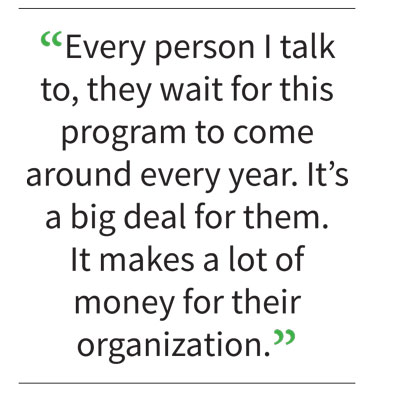 The nursery business is typically a seasonal business, said Grant Cornia, Headstart’s production manager. The company decided to start growing poinsettias to keep its employees around during the late fall and winter season of year when its vegetable and ornamental seed plants were not being produced. The off-season crop allows the company to keep its workforce through the season and even year-round.
The nursery business is typically a seasonal business, said Grant Cornia, Headstart’s production manager. The company decided to start growing poinsettias to keep its employees around during the late fall and winter season of year when its vegetable and ornamental seed plants were not being produced. The off-season crop allows the company to keep its workforce through the season and even year-round.
“It was mainly to give back to the community, give the community the opportunity to turn around and have a fundraiser here locally,” he said. “It’s a win for the community and a win for us because we can keep our workers happy and employed and get more paychecks.”
Headstart provides free deliveries of poinsettia fundraising plants anywhere in Gilroy, Morgan Hill, Hollister and San Juan Bautista. It also ships to organizations in San Jose as well two or three semi-truck loads to sports teams in Arizona that need to raise funds to travel or for equipment. Locally, St. Mary’s School and St. Mary’s Church, Christopher High School and the track team and cheerleader squad at Gilroy High School are a few of the organizations that purchase the poinsettias for their fundraising.
“A typical order for a fundraising group is anywhere from 80 plants and some schools do a thousand to three thousand,” Cornia said. “It allows kids to participate in a lot of school activities that they wouldn’t be able to do if they didn’t have funds.”
An organization can make $5,500 for selling 1,000 plants at $11 each. And the plants are not fattening compared to the typical chocolate box or caramel popcorn tins often done as holiday fundraising incentives, he said.
“You’re not selling candy or whatever,” Cornia said. “That’s a cool part of it. I think the other part of it is that everybody sees them all over town and it’s just fun to go to your friend’s house for a Christmas party and see the plant.”
Poinsettias also last for several months, adding beauty to a home or business beyond the Christmas season. For one recipient, that posed a peculiar problem, Campilli said.
“A woman called two or three years ago — it was April or May — and she said, ‘My poinsettia plant will not die. Will you tell me how to kill it? How do I get rid of it?’ And I told her, ‘Just throw it away.’ The plants last a long time.”
Most people love receiving these colorful flowers that accent South Valley houses during the holidays, one reason the Headstart-grown poinsettia fundraiser is so popular for local nonprofits, said Campelli.
“I run the program and I get all the fun of it and hear how excited they are and what it means for them,” she said. “I get the heart-felt thank yous. Every person I talk to, they wait for this program to come around every year. It’s a big deal for them. It makes a lot of money for their organization.”
It’s also a good way for children to learn how to raise money and be responsible in getting the plants to the customers, she said.
“I’m sure when they deliver the plants they see on people’s faces the look of how excited they are, and they see it was worth the money they paid,” she said.


